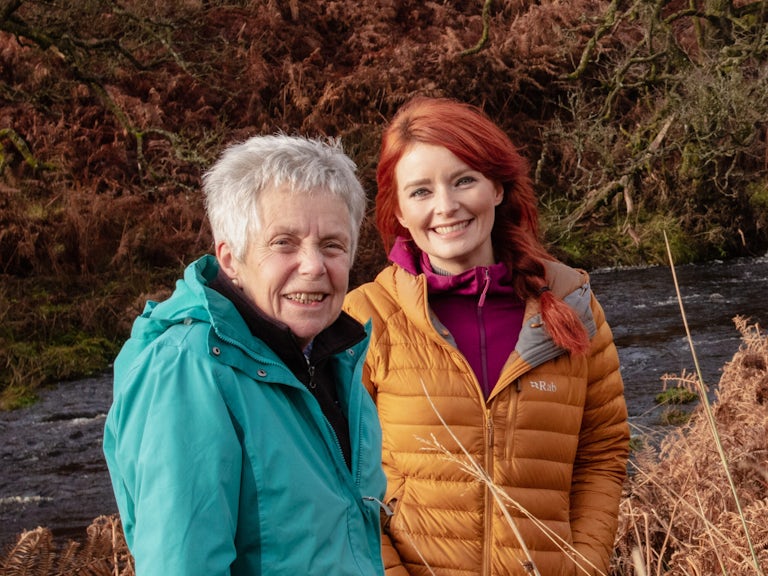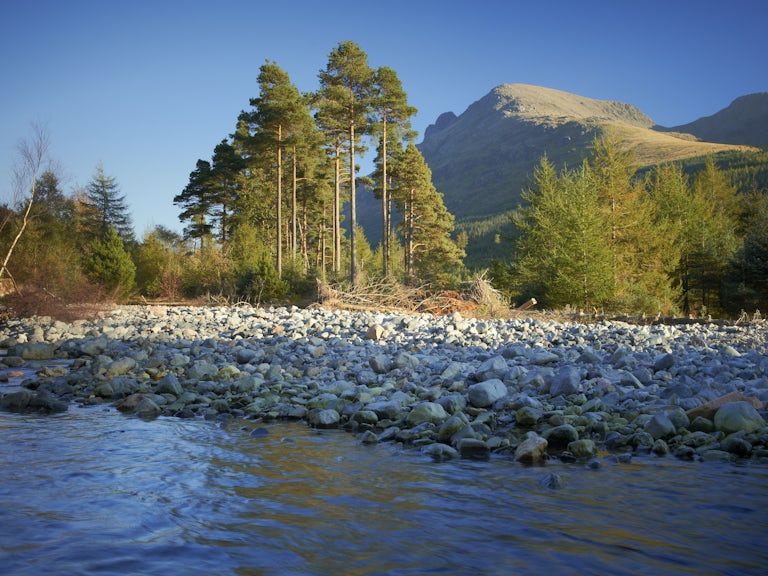Case study: Tarras Valley Nature Reserve
The residents of Langholm pulled off not one, but two, community buyouts to raise a total of £6 million to purchase a 4,249ha (10,500 acre) nature reserve from Buccleuch Estates — making the reserve south Scotland’s largest community buyout.

In summary
- Project type: Community-owned nature reserve
- Location: Dumfries and Galloway, Scotland
- Current Income: Public & private grants, agricultural subsidies, stewardship payments, donations, regenerative grazing, timber harvesting, rental properties
- Projected Income: Public & private grants, donations, regenerative grazing, timber harvesting woodland enterprises, rental properties, events & training courses, ecotourism
Tarras Valley Nature Reserve’s primary objective is to create a diverse community asset where nature is thriving. This includes protecting and restoring peatlands, expanding native woodlands, bringing back lost wetlands, enriching ancient woodlands and providing a sanctuary for rare species like hen harriers and pine martens.
But beyond nature recovery, the vision of The Langholm Initiative, a community development trust, is to support community regeneration efforts in the area. The aim is to help create new nature-based opportunities for the former textile town in Scotland’s Dumfries and Galloway, including generating jobs, diversifying income and attracting visitors. It has already created six new jobs in less than three years.
Explore our Rewilding Financing Report
Uncover our blueprint for a game-changing shift in funding and investment for rewilding.

The buyout’s first stage made global headlines in 2021 after residents successfully raised £3.8 million so that The Langholm Initiative could purchase 2,104ha (5,200 acres) of former grouse moor, river valley and woodland from Buccleuch, one of Scotland’s largest landowners. The following year, Langholm doubled the size of the reserve by raising £2.2 million. Like the first buyout, it involved a crowdfunding campaign, this time raising £242,000 in just nine months.
Jenny Barlow, Estate Manager at the reserve, admits they weren’t sure if people would support a second crowdfunding campaign, but says that “having a very clear, inspiring message about where people’s money would be spent really got the momentum going”. Donations flooded in not just from people in Langholm, but from around the world.
It was a labour intensive undertaking, she says, having worked almost full-time on the campaign alongside other staff, and points out that “realistically, it can’t just be done with volunteers”. But there’s no doubt that the campaign brought spin-off benefits. “The crowdfunded was almost like a proof of concept for other funders,” she adds. It definitely helped to attract larger donors, including a number of charities and philanthropic organisations, plus the Scottish Land Fund, which awarded a generous £2 million in total.

Currently, most of the reserve’s ongoing funding comes from a mix of private and public grants, including Scotland’s Agri-Environment Climate Scheme, as well as some donations. But the reserve is developing a community-led, five-year plan to transition to more revenue-generating projects and activities to reduce its reliance on grants.
The business plan devised for the second buyout projected that the land could generate a surplus of £1.29 million over 26 years, with £1.05 million allocated for development funding and an overall cash surplus of £292,000. The reserve already generates income from conservation grazing, timber harvesting and rental properties on-site — and promising opportunities brought up during recent community engagement events include training and business development for young people, events and residential courses, community growing and ecotourism.
The fact that scores of people have contacted The Langholm Initiative about how to do something similar demonstrates that Tarras Valley Nature Reserve is a shining, but relatively rare, example of how community buyouts can finance rewilding initiatives. Yet if other such high-profile — and labour-intensive — community buyouts are to succeed across the country, they can’t do this on their own. It’s essential they get the backing of land reform policy and public funding, just as Langholm did through the Scottish Land Fund, a crucial piece of Scottish Government financing for rewilding. However, with land prices as high as they are, the potential for community buyouts is limited by the size of the pot — which currently stands at just £11 million.
Published as part of our Rewilding Finance report , June 2024.

The Rewilding Network
The Tarras Valley Nature Reserve is part of our Rewilding Network, the go-to place for projects across Britain to connect, share and make rewilding happen on land and sea.
Find out more about the Tarras Valley Nature Reserve

Join the Rewilding Network
Be at the forefront of the rewilding movement. Learn, grow, connect.
Join the Rewilding Network




